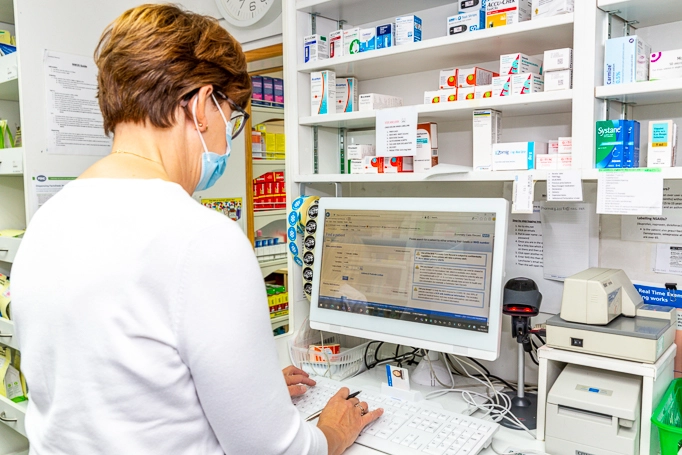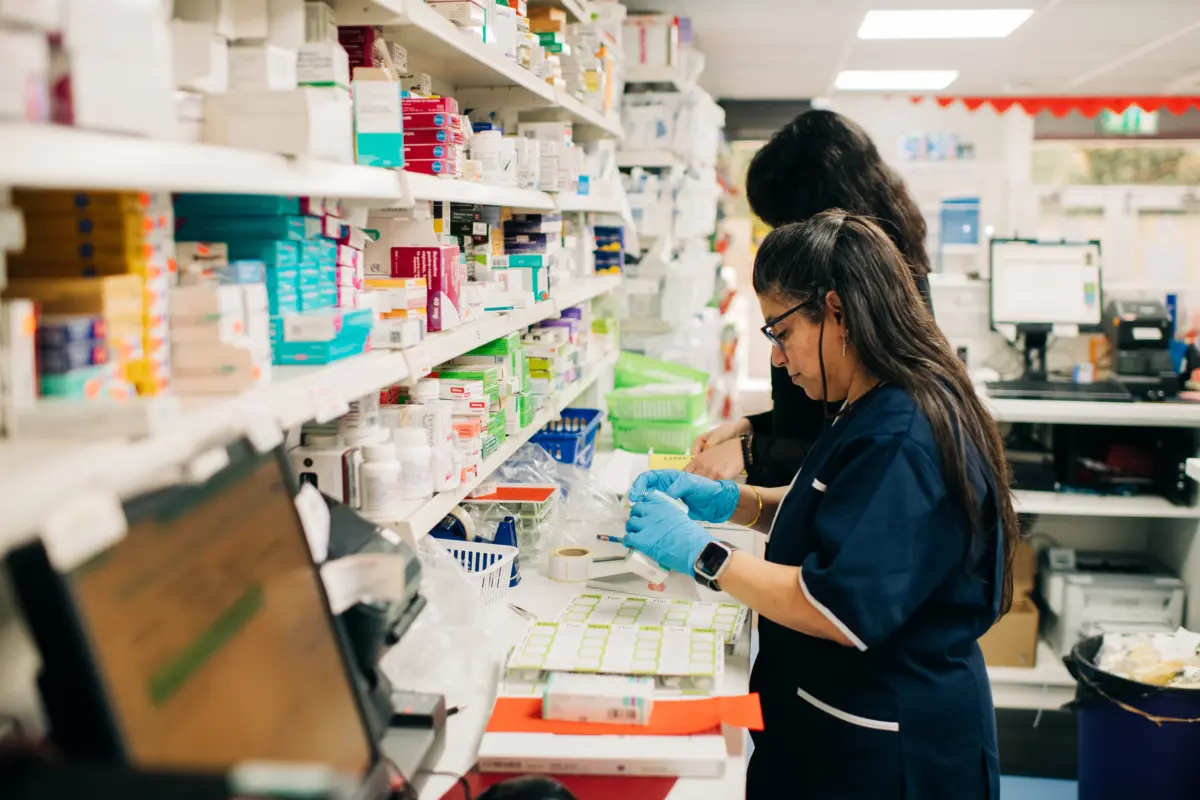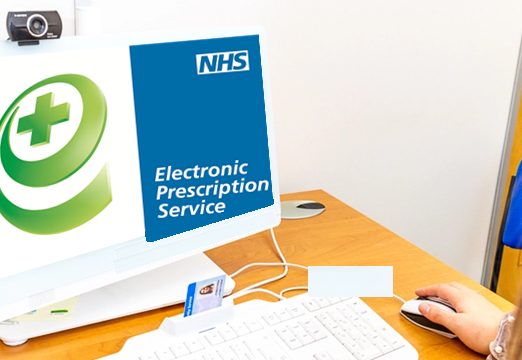Keeping pharmacy profile information up-to-date
Published on: 11th April 2022 | Updated on: 9th October 2025
When your pharmacy’s details change, it’s important to update all relevant digital and public profiles. Keeping this information accurate helps patients, healthcare professionals and others contact or visit your pharmacy when needed.
This page outlines key areas to check and update. You must also use our pharmacy change of circumstance guide/checklist to help manage updates when your pharmacy’s goes through changes of ODS code, ownership, location or IT system.
Read more at: DoS
DSP owners must keep their NHS website and Directory of Services (DoS) profiles up to date—especially regarding the NHS services they provide. Here’s how:
Your website and app
Make sure your contact details, services and other key information are current. If you use a patient app, update it too.
NHS website profiles
DSPs are listed under the ‘Internet Pharmacy’ section of the NHS website. This section appears before or after a patient searches for a pharmacy. The profile includes your pharmacy name, phone number and website. Use your own website to share more details about your services.
DSP profiles were originally set up differently from brick-and-mortar pharmacies because DSPs are not expected to provide essential dispensing services to their local area under market entry regulations.
Using NHS Profile Manager
New NHS website profiles for DSPs were launched in late 2024. DSP owners must enter full contact details and opening hours by 31 March 2025.
NHS Profile Manager lets you update opening hours during unplanned closures—without needing to contact your DoS lead.
Currently, DSP profiles show your organisation name, website, phone number and opening times. You’ll be able to add services and facilities later—expected by the end of December 2025 and NHS England will .
The NHS Profile Manager team will contact DSPs with updates and requirements.
Updating DoS information
If you need to make changes that NHS Profile Manager doesn’t yet support, you can contact your local DoS lead. However, opening hours can already be updated via NHS Profile Manager, so there’s no need to contact DoS leads for this.
Local DoS teams manage and maintain DoS data. You can find contact details via NHS Service Finder (available to pharmacy team members and LPCs):
List of local DoS team contact info (login required).
Currently, NHS Profile Manager doesn’t allow email address corrections. However, pharmacy owners should be able to update most DoS information without needing to contact the local DoS team directly (see NHS Profile Manager section above).
In some cases, LPCs may support pharmacy owners with queries about local DoS information.
Further information
Check with your IT supplier to confirm your DSP is correctly listed for relevant services. Some services require registration via MYS or other platforms. You can find more details in the: Services hub.
Refer to the pharmacy change of circumstance guide/checklist and the ‘Other portals and systems’ section of this page. Many of your online accounts may be linked to an email address.
See also: Mailing lists.
For regulatory guidance and location change applications, see: Market entry regulations.
If your address has changed or needs correcting, refer to the pharmacy change of circumstance guide/checklist—your address may need updating in several places.
NHS England’s pharmacy contract team maintains records of which pharmacies fall under each Local Pharmaceutical Committee (LPC). This information is shared with NHSBSA. LPCs can request updates to the pharmacy–LPC dataset when needed.
About the LPC code
Each LPC has a unique seven-character code starting with ‘YL02’. This code is used by the NHS for reporting and other purposes. Every pharmacy is linked to one LPC code, which determines its official LPC assignment.
Requesting changes to LPC details
If an LPC identifies an issue—such as an incorrect LPC name, structure, or pharmacy assignment—it should contact NHS England’s pharmacy contract team. NHS England will liaise with PCSE, the STP, and NHSBSA to investigate and action the request if appropriate.
LPC names in NHS datasets
LPC constitutions recommend including ‘LPC’ in the formal name. Some LPCs use trading names like ‘Community Pharmacy X’. For consistency, it’s recommended to use ‘&’ instead of ‘and’—as seen in NHSBSA’s LPC listings.
If a pharmacy team believes their pharmacy is linked to the wrong LPC or that NHS data needs updating, they should contact their LPC directly.
If your email or postal address changes, you may need to update your details on mailing lists.
Community Pharmacy England emails include links to ‘unsubscribe’ or ‘update your profile’ at the bottom of each message.
See also: Community Pharmacy England mailing list sign-up. This option is also available at the bottom of every Community Pharmacy England webpage.
Read more at: NHS Profile Manager
Read more at: NHS website profiles
See: Updating NHS.net Connect.
You can update your personal NHS.net Connect profile by logging into the NHS.net Connect portal.
Every pharmacy has a Parent Organisation Code (POC). If ownership changes or a correction is needed, you may need to contact ssd.nationalservicedesk@nhs.net.helpdesk@nhs.net to request updates to the POC code(s) linked to your pharmacy or pharmacies.
You can check your POC code and linked pharmacies via the ODS portal. If you own multiple pharmacies, you should have at least one POC.
See: Checking pharmacies linked to your POC code using ODS portal factsheet.
Read more at: POC.
Community Pharmacy England strongly recommends pharmacy owners planning ODS changes use the pharmacy change of circumstance guide/checklist.
See also: ODS codes.
NHS England manages pharmacy opening hours through its regional offices. You may need to notify your local NHS England team or request a change.
Read more at: Opening hours.
See also: NHS website and DoS, which both display each pharmacy’s opening hours.
For guidance on regulatory matters and how to apply for an ownership change, see: Market entry regulations.
Refer to the pharmacy change of circumstance guide/checklist and the ‘Regulator information’ and ‘Other portals and systems’ sections of this page. Ownership details often need updating across multiple systems.
For guidance on regulatory matters and ownership changes, see: Market entry regulations.
The General Pharmaceutical Council (GPhC) lists your ownership details, including the owner name. The NHS also collects this information for reporting purposes—for example, the NHS ODS portal displays the owner name for each pharmacy organisation.
Each pharmacy owner will have at least one NHS Parent Organisation Code (POC). See the ‘NHS POC’ section of this page for more details.
Refer to the pharmacy change of circumstance guide/checklist and the ‘Regulator information’ and ‘Other portals and systems’ sections of this page.
Your pharmacy’s phone number may appear across multiple profiles.
You can update your NHS website pharmacy profile using NHS Profile Manager.
The NHS ODS eDispensary data also includes your contact number, based on NHSBSA records. To update this, NHSBSA requires confirmation from your local NHS England team, an authorised signatory, or PCSE (if they’re handling an application such as an ownership change).
Check and update your GPhC listing as needed.
Check your Royal Mail listing if your pharmacy is missing or listed incorrectly.
Ensuring your address is correctly listed helps avoid missed post. Many organisations treat the Royal Mail directory as the official source for UK business addresses and postcodes.
Pharmacy owners must keep service information up to date on the NHS website and Directory of Services (DoS). Here’s how:
- Service registration: Some services require registration via MYS or other platforms.
- Bricks-and-mortar pharmacies: Use NHS Profile Manager to update service details.
- Distance selling pharmacies (DSPs): Update your website and patient app (if used).
- DSP NHS website profiles: Contact the NHS website helpdesk to update your profile: nhs.uk/contact-us/nhs-website-profile-feedback. DSP profiles currently include website links, pharmacy names, and phone numbers.
- DSP DoS updates: Contact your local DoS lead if changes are needed (e.g. adding Pharmacy First Service). Local DoS teams manage this data. A list of contacts is available via NHS Service Finder (login required for pharmacy teams and LPC members).
Note: NHS Profile Manager does not currently allow email address corrections. However, pharmacy owners should be able to update most DoS information without contacting the local DoS team directly (see NHS Profile Manager section). LPCs may support pharmacy owners with DoS-related queries.
Also check with your IT supplier to confirm your pharmacy is correctly listed for relevant services. More details are available in the: Services hub.
See: Updating Smartcards.
For guidance on regulatory matters and ownership changes, see: Market entry regulations.
Refer to the pharmacy change of circumstance guide/checklist and the ‘Regulator information’ and ‘Other portals and systems’ sections of this page.
Your trading name is listed by the GPhC.
Also consider:
- Data Security and Protection Toolkit (DSPTK) profile
- MYS profile
- ISP profile
- Website/system lists which pharmacy teams access (pdf) – some of which may include information about your pharmacy profile
- Other online directories e.g. Google Business, and Yellow Pages online (Yell.com).
For more information on this topic please email it@cpe.org.uk











